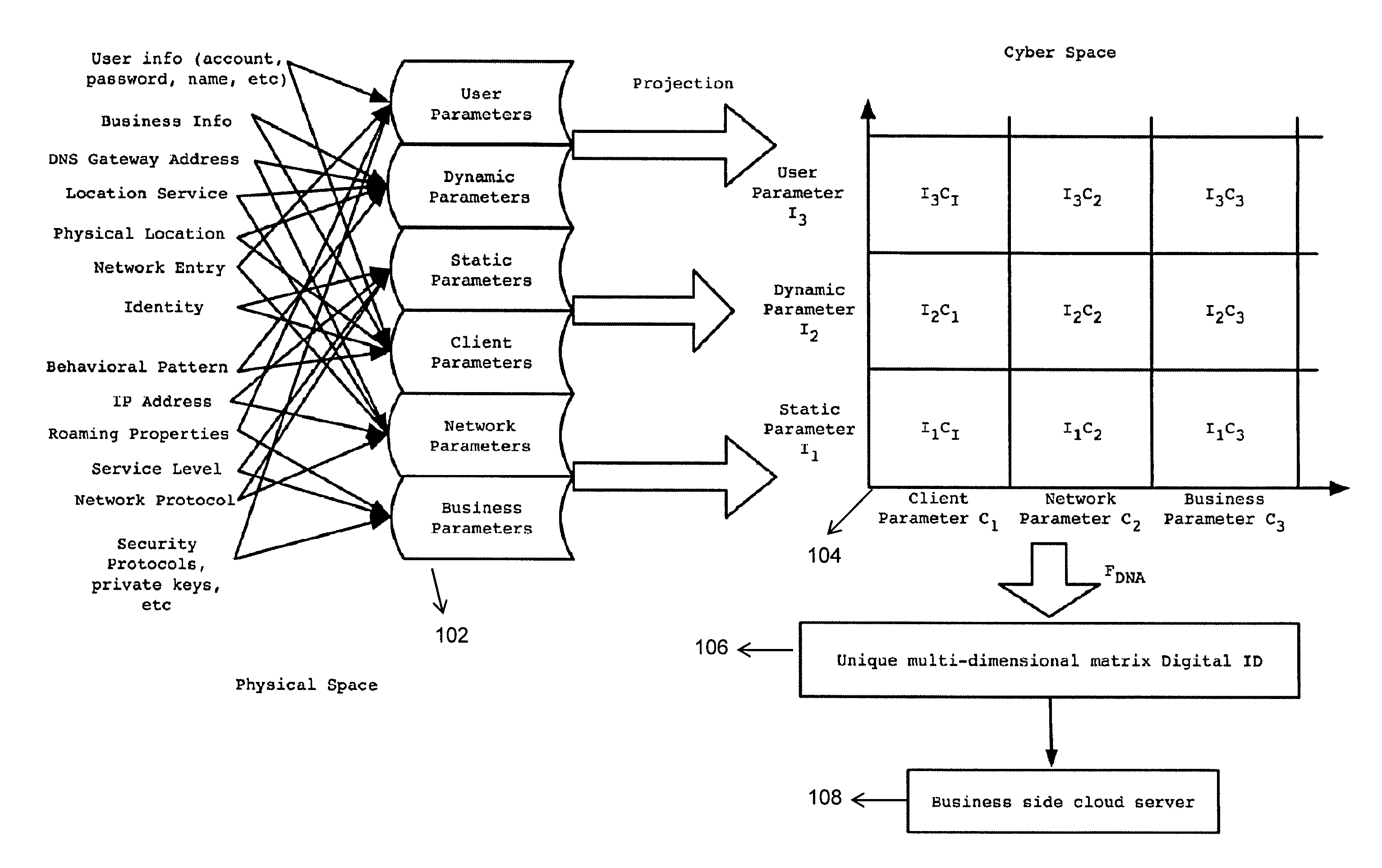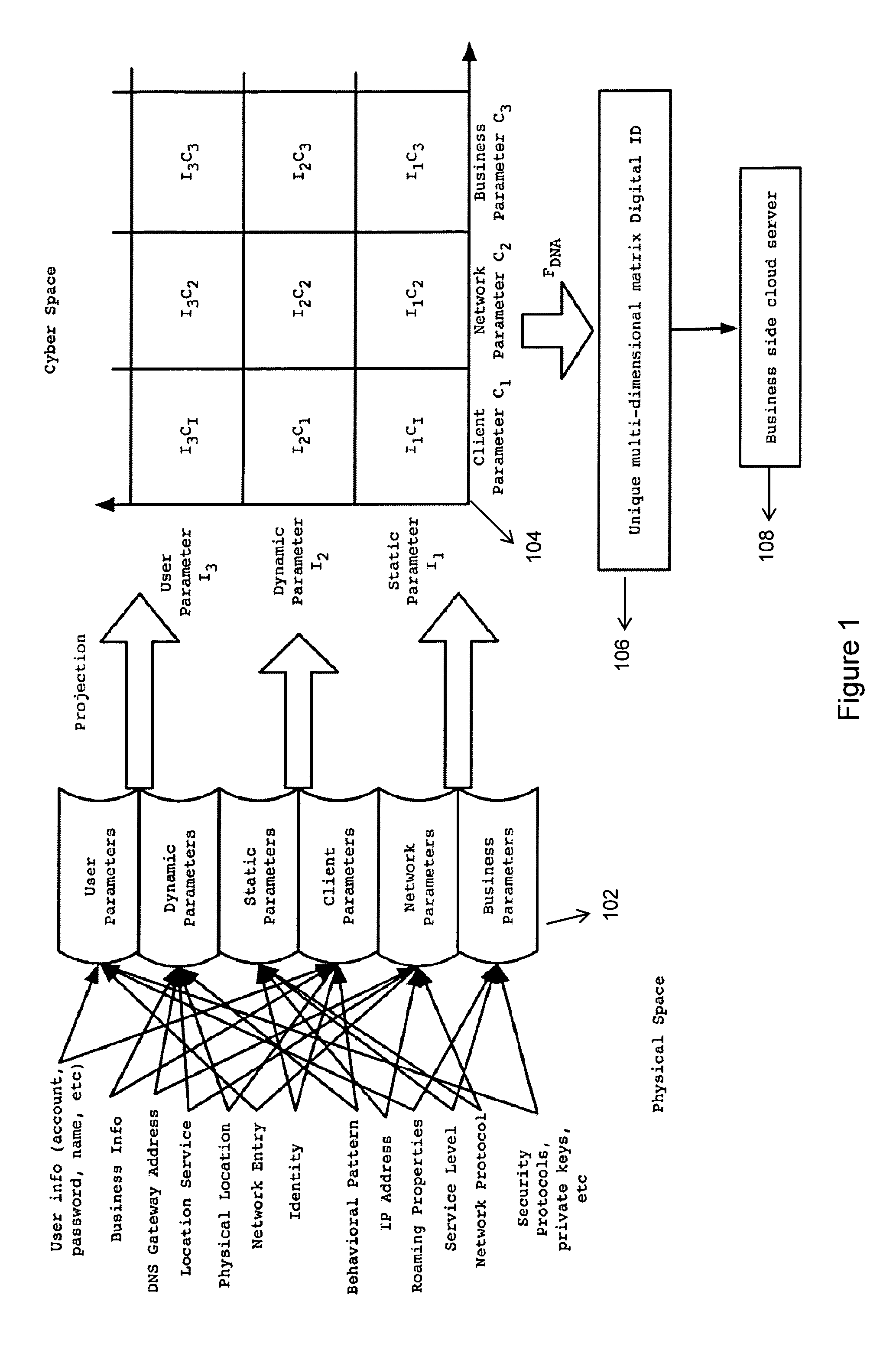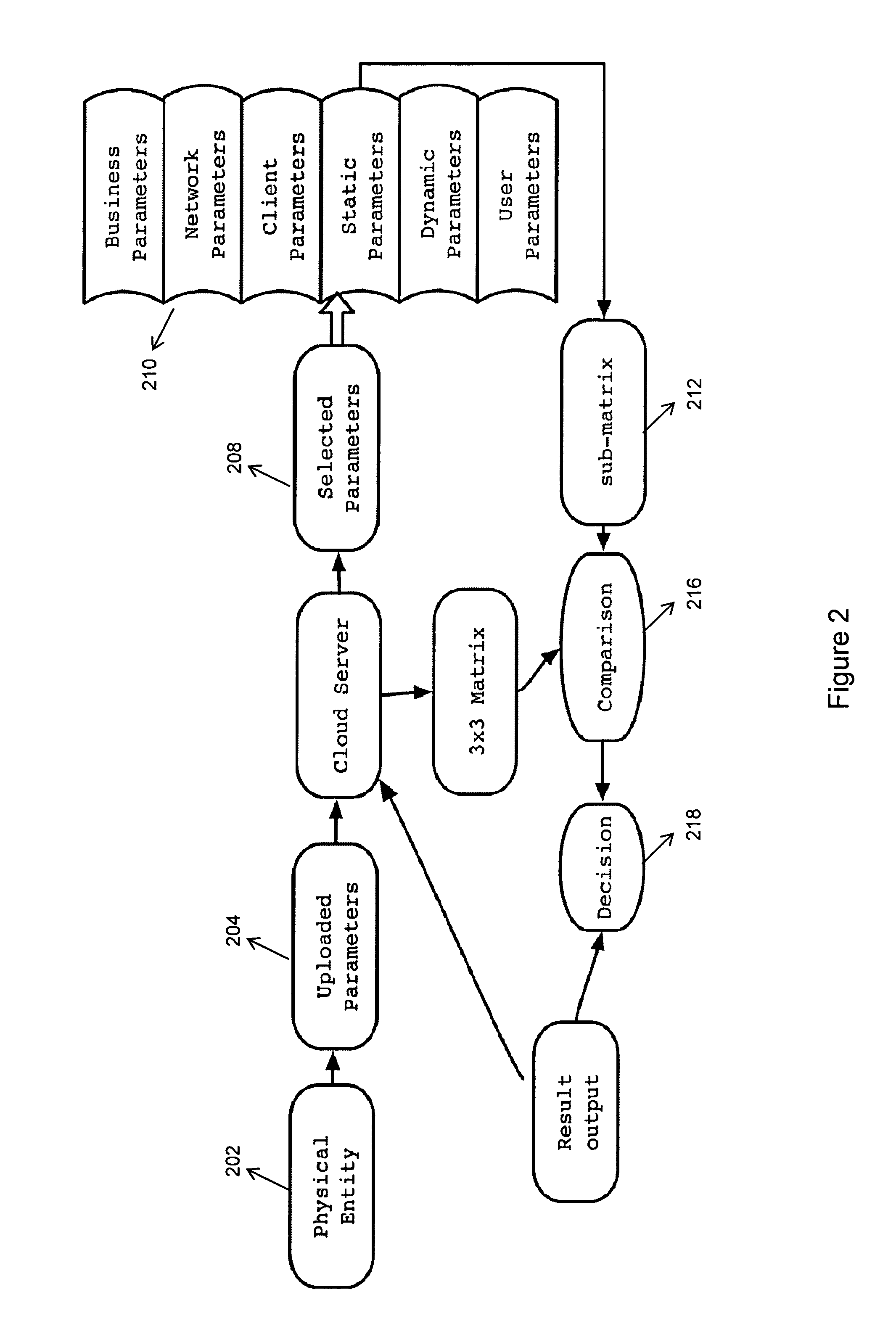Cyber gene identification technology based on entity features in cyber space
a technology of cyber space and entity features, applied in the field of new identification technologies, can solve the problems of many other costs and functions, and the dimensional criteria cannot uniquely identify certain objects, and neither realize unified authentication,
- Summary
- Abstract
- Description
- Claims
- Application Information
AI Technical Summary
Benefits of technology
Problems solved by technology
Method used
Image
Examples
Embodiment Construction
[0026]The present invention will be described more fully hereinafter with reference to the accompanying drawings, in which some examples of the embodiments of the present invention are shown. Indeed, the present invention may be embodied in many different forms and should not be construed as limitation to the embodiments set forth herein, rather, these embodiments are provided by way of example so that this disclosure will satisfy applicable legal requirements. Like numbers refer to like elements throughout.
[0027]The following specification for the implementation of the present invention is made based on the attached drawings.
1. Information Extraction and Cyber ID Generation Process
[0028]FIG. 1 gives a flow diagram of cyber ID information extraction and ID sequence generation.
[0029]Cyber ID is subject to the structure of ID function and multidimensional matrix. ID sequence is formed from a 3×3 parameter matrix (step 104) constructed by user parameters, dynamic parameters, static par...
PUM
 Login to View More
Login to View More Abstract
Description
Claims
Application Information
 Login to View More
Login to View More - R&D
- Intellectual Property
- Life Sciences
- Materials
- Tech Scout
- Unparalleled Data Quality
- Higher Quality Content
- 60% Fewer Hallucinations
Browse by: Latest US Patents, China's latest patents, Technical Efficacy Thesaurus, Application Domain, Technology Topic, Popular Technical Reports.
© 2025 PatSnap. All rights reserved.Legal|Privacy policy|Modern Slavery Act Transparency Statement|Sitemap|About US| Contact US: help@patsnap.com



